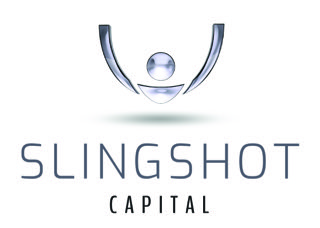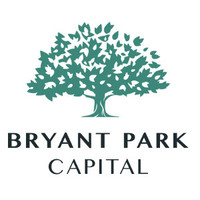
John Freund's Posts
3650 Articles
Key Takeaways from LFJ’s Quarterly Industry Roundup on Commercial Litigation Funding
Burford Hosts Roundtable on Restructuring and Liquidity
Litigation Finance—High Risk, High Reward

Litigation Finance Journal’s Quarterly Industry Roundup
Closing the Gender Gap in Law

Litigation funder Validity Finance secures $100M in new capital, adds first time corp. counsel from Fried Frank

Omni Bridgeway resolves to fund claims on behalf of Wirecard AG shareholders against Ernst & Young GmbH
- Omni Bridgeway – Jeremy Marshall, Senior Investment Manager, +44 7733 261606, jmarshall@omnibridgeway.com or our client group at wirecard@omnibridgeway.com
- Quinn Emanuel – Dr Nadine Herrmann, Partner, +49 40 89728 7000, nadineherrmann@quinnemanuel.
com

Delta Capital Partners Management Welcomes a New Board of Advisors
CHICAGO, Illinois, July 27, 2020 -- Delta Capital Partners Management LLC, a global private equity firm specializing in litigation and legal finance, has announced its new Board of Advisors.
Delta has developed an outstanding Board of Advisors that consists of eight members who are experts in government relations and geopolitical affairs, public relations and marketing, investigations and intelligence gathering, and capital markets. The members include:
- Ian Casewell – London Office Managing Partner of the Mintz Group, a top-tier business intelligence and investigation firm, and a former Europol intelligence analyst;
- Nitin Chadda – Co-Founder and Managing Partner of WestExec Advisors, former Senior Advisor to the U.S. Secretary of Defense, and former Director at the White House National Security Council;
- David Hellier – Partner and Chair of the Capital Markets Group at Bertram Capital, member of the Board of Directors of the Association for Corporate Growth, and former CEO of a highly technology company and one of the fastest growing Internet companies;
- Brian Maddox – Senior Managing Director at FTI Strategic Communications with over 30 years of experience in public relations and marketing;
- Bill Moran – Retired Four-Star Admiral who served as the Vice Chief of Operations and Chief of Personnel for the United States Navy;
- Ileana Ros-Lehtinen – former Chairperson of the U.S. House Foreign Affairs Committee, and member of United States Congress for nearly 30 years;
- Dennis Ross – former special assistant to the United States President and former Director at the White House National Security Counsel; and
- Geoffrey Verhoff – Senior Advisor at Akin Gump, and former Vice Chairman of the Republican National Committee’s Finance Committee.
Christopher DeLise, Delta's Founder, CEO and CO-CIO, stated, “We are honored to have such accomplished and highly respected professionals on Delta’s Board of Advisors. Their backgrounds, innumerable achievements within their respective fields, and vast and deep experiences will help Delta execute various strategic objectives and further enhance and distinguish Delta’s strong position within the litigation finance industry. These eight outstanding individuals join Delta’s team as the firm continues its U.S. and global expansion to meet the evolving needs of end-users.”
About Delta
Delta Capital Partners Management LLC is a US-based, global private equity firm specializing in litigation and legal finance, judgment and award enforcement, and asset recovery. Delta creates bespoke financing solutions for professional service firms, businesses, governments, financial institutions, investment firms, and individual claimants.
BRYANT PARK CAPITAL & MULTI FUNDING, INC SECURE A $30 MILLION DOLLAR SENIOR DEBT FACILITY

“Edge” for Litigation Finance Managers
- As the litigation finance industry matures, there will be more competition, more fragmentation and more specialization
- Competitive advantages will be necessary for managers to differentiate themselves in the marketplace and produce strong risk-adjusted returns
- Managers should institutionalize their “edge” to create equity value for themselves, and separate the value of their organizations from the principals running it
 INVESTOR INSIGHTS
INVESTOR INSIGHTS- Investors should be looking for managers that have some advantage, or “edge” vis-à-vis their competition; an informational advantage is one approach
- Funders should be open-minded about their diligence process, and experiment with non-conventional approaches to add value to the case
- Informational advantages may be particularly beneficial in collections and enforcements
 Investor Insights As the litigation finance industry matures, there will be a significant increase in managers who are attracted by the returns inherent in the industry, and the intellectual challenge of applying their litigation craft in another application. The industry will scale, fragment and specialize. This will make it more difficult for fund managers to differentiate their approach and value. Forward-thinking managers should be looking at ways to create “edge” for themselves to attract institutional capital and generate superior risk-adjusted returns. An informational advantage is one such way to create “edge”. As always, I am open to criticism and other points of view, so feel free to contact me to exchange ideas.
Investor Insights As the litigation finance industry matures, there will be a significant increase in managers who are attracted by the returns inherent in the industry, and the intellectual challenge of applying their litigation craft in another application. The industry will scale, fragment and specialize. This will make it more difficult for fund managers to differentiate their approach and value. Forward-thinking managers should be looking at ways to create “edge” for themselves to attract institutional capital and generate superior risk-adjusted returns. An informational advantage is one such way to create “edge”. As always, I am open to criticism and other points of view, so feel free to contact me to exchange ideas.  Edward Truant is the founder of Slingshot Capital Inc., an investor in the litigation finance industry (consumer and commercial) and a former partner in a private equity. Ed is currently designing a new fund focused on institutional investors who are seeking to make allocations to the commercial litigation finance asset class.
Edward Truant is the founder of Slingshot Capital Inc., an investor in the litigation finance industry (consumer and commercial) and a former partner in a private equity. Ed is currently designing a new fund focused on institutional investors who are seeking to make allocations to the commercial litigation finance asset class.  Cameron Colquhoun is the founder of Neon Century, a former UK intelligence officer and winner of the Fulbright Award for Cyber Security. Neon Century is an elite corporate intelligence firm based in London, providing clients in the hedge fund, equity and litigation sectors with decisive advantage.
Cameron Colquhoun is the founder of Neon Century, a former UK intelligence officer and winner of the Fulbright Award for Cyber Security. Neon Century is an elite corporate intelligence firm based in London, providing clients in the hedge fund, equity and litigation sectors with decisive advantage.Assisting Clients with Relationship Management During COVID
How GCs Can Mitigate Economic Pressure
How Litigation Finance Can Benefit Cases Mid-Litigation

Bryant Park Capital Advises ProMed Capital Ventures in Sale to Experity Ventures
NEW YORK, July 20, 2020 /PRNewswire/ -- Bryant Park Capital ("BPC"), a leading middle-market investment bank, announced today that ProMed Capital Ventures, LLC ("ProMed" or the "Company"), a leading provider of financing to medical practices and facilities in the United States, has been sold to Experity Ventures, LLC, the parent company for several specialty finance and legal funding related services businesses in the United States, including Nexify Holdings, Medsolve Financial Group, and Thrivest Legal Funding, LLC dba Thrivest Link. The financial terms of the transaction were not disclosed.
BPC served as exclusive financial advisor to ProMed.
"Bryant Park Capital was instrumental in advising ProMed throughout the entire process, from comparing liquidity options for shareholders to managing a lengthy negotiation and closing process. The team at BPC provided thoughtful advice to ProMed throughout the process and helped us to achieve a successful outcome," said David Shulman, co-founder and CEO of ProMed. "We ended up finding the perfect partner for ProMed and its employees and clients, and we appreciate BPC's guidance and efforts in making this possible."
About ProMed
Founded in 2013, ProMed is a leading provider of medical receivable funding solutions. ProMed partners with healthcare providers, surgery centers and diagnostic and related facilities throughout the U.S. that provide patient care in exchange for medial liens (MLs) or medical letters of protection (MLOPs). The company predominately funds medical services for patients who have been injured as a result of a personal injury accident or event. Based in Las Vegas, Nevada, ProMed provides immediate reimbursement to doctors, surgeons, medical facilities and other professionals on behalf of patients while obtaining the healthcare provider's ML/MLOP against contingent future legal proceeds. Victims of personal injury can get access to the healthcare they need whether they have health insurance or not and medical providers can enhance their practices and serve this patient population while immediately improving cash flow and financial liquidity.
For more information on ProMed, please visit www.promedcapital.com.
About Experity Ventures
Experity Ventures, founded in 2019, is the parent company for Nexify Capital and Nexify Solutions, MedSolve Financial Group and Thrivest Legal Funding, LLC/dba Thrivest Link. Nexify Capital has entered into several strategic financing and operational partnerships with legal funding companies in the United States. Nexify Solutions develops and markets best-in-class enterprise and workflow software for the legal funding market place, which is designed to automate pre-settlement funding from intake to decision analytics, to servicing and payoff, while offering full accounting and reporting capabilities. Thrivest is a direct-to-market pre-settlement legal funding company that has successfully provided thousands of non-recourse advances to individuals with pending litigation, predominately in personal injury cases. Experity has offices in Philadelphia, New York, Nevada and Florida.
For more information on Experity, please visit www.experityventures.com.
About Bryant Park Capital
Bryant Park Capital is an investment bank providing M&A and corporate finance advisory services to emerging growth and middle-market public and private companies. BPC has deep expertise and a diversified, well-founded breadth of experience in a number of sectors, including business services. BPC has arranged lines of credit, raised growth equity and assisted in mergers and acquisitions for its clients in various industries. Our professionals have completed nearly 300 assignments representing an aggregate transaction value of over $35 billion.
For more information about Bryant Park Capital, please visit www.bryantparkcapital.com.
Bangladeshi Economy Attracts Litigation Funders

Omni Bridgeway invests in Japanese legal business to provide access to justice for Japanese claimaints

NERA Consulting Economist joins Augusta as Lead Economist
Augusta, the UK’s largest funder of litigation by case volume today announces the appointment of Clara Segurola as Lead Economist.
Clara is a financial economist with more than 15 years of professional experience and joins from NERA Economic Consulting, where she was an Associate Director specialising in the assessment and quantification of damages in international disputes.
Recognised as one of the Most Highly Regarded Expert Witness Future Leaders in Who’s Who Legal Arbitration, Clara has a strong track record of valuations and economic quantum assessments in investment and commercial disputes across various industry sectors.
Louis Young, Managing Director of Augusta, said “Clara and her skill set are a key addition to our recently incepted Investment Valuation and Structuring team, which is headed up by Matt Pitchers, who joined us from Deloitte late last year. The IVS team is our response to demands from our law firm clients who are looking for deeper expertise and support from their funder. The services of this team are available at no cost to our law firm partners, and it makes the task of structuring finance solutions for their claims a much more collaborative process.”
Clara Segurola, Lead Economist at Augusta, said “I am very pleased to be joining Augusta Ventures. I’ve been impressed with Augusta’s reputation in the market and their forward-thinking approach to innovation. I look forward to making a significant impact and to helping law firms and their clients gain access to funding in the most efficient way”.
About Augusta
– Established in 2013, Augusta is the largest litigation and dispute funding institution in the UK by # cases.
– Augusta has offices in London, Sydney, Melbourne and Toronto.
Ontario Makes Sweeping Changes to Class Proceedings Act
Law Firms Utilize Lit Fin to Meet Obligations During COVID

Longford Capital Continues to Add to its Team of Experienced Litigators and Trial Lawyers with the Addition of Marc Cavan as Director

UK Legal Industry Drops to Four Year Low
The UK's Legal industry generated revenues of £2.35bn in May 2020, 12% down on May last year. May 2020 was the lowest-earning month in four years, according to Office of National Statistics data released on 14th July.
May is traditionally the weakest month of the year for the Legal profession, with April being one of the most lucrative. Industry revenues fell 29% between April 2020 and May 2020, with April having remained relatively robust as the impact of lockdown had likely not yet fully washed through.
In comparison, the overall Services sector (including Legal) which had been harder hit and was at its lowest level in a decade, grew by 2% in May, similarly to the UK’s overall economy which increased by 1.8% month on month.
Louis Young, MD at Augusta said: “May’s revenue data demonstrates the significant negative impact the pandemic has had on the UK’s Legal industry. But as such data reflects work that would have commenced before the crisis, which is in line with how law firms operate, the true final impact is likely to be greater. As the wider economy begins to show signs of recovery, many law firms continue to look for options to control costs and strengthen their balance sheets with the expectation that they are not yet out of the woods”.
---
About the ONS Data
- ONS Monthly Business Survey data shows Legal Activities revenue as £2.35bn in May 2020 compared to £3.32bn in April 2020 and £2.67bn in May 2019.
- The legal industry had been on course for a strong year before the crisis with March 2020 being the third highest month in history for the UK legal industry and April 2020 showing only a 5% decline on March 2020.
Can Litigation Funding Mitigate the ‘Death of the Billable Hour?’
Nanoco Signs Funding Deal in Case Against Samsung
Takeaways from the 2020 Litigation Finance Survey Report

Legal-Bay Pre-Settlement Funding Announces Updates to Essure Lawsuits

Litigation Finance is Cheaper Than You Might Think!
Legalist Founder Explains Unique Funding Model
Advice from a Litigator Turned Litigation Finance Executive

Delta Capital Partners Management Expands its Global Marketing Team
CHICAGO, Illinois, July 1, 2020 -- Delta Capital Partners Management LLC, a global private equity firm specializing in litigation and legal finance, today announced the hiring of a Chief Marketing Officer and a Marketing Associate.
Kim Fine has been hired as Chief Marketing Officer to closely work with Delta’s Chief Executive Officer and senior management to advance Delta’s strategic marketing and business development objectives and further develop Delta’s brand.
Prior to joining Delta, Ms. Fine was a Managing Director at ALM, formerly American Lawyer Media, where she worked closely with the editors for The American Lawyer, Corporate Counsel magazine, IP Law & Business, and Law Firm Inc. to create events to grow their brands and materially enhance their editorial content. In addition, Ms. Fine has served as a Project Manager at Marsh FINPRO and was a Senior Vice President of Executive Liability for Beecher Carlson. Prior to her role at Marsh, Ms. Fine co-founded Fulcrum Information Services, which produced over 300 conferences annually.
Christopher DeLise, Delta's Founder, CEO and CO-CIO, stated, “We are excited to have someone with Kim’s experience and enthusiasm joining Delta’s team. Her background in marketing within the legal and financial services industries will enhance Delta’s efforts to market to prospective claimants, law firms, professional service providers, and other end-users of litigation and legal finance.”
Additionally, Megan Bradley has been hired as a Marketing Associate to assist Ms. Fine and other members of Delta’s marketing department. Ms. Bradley is a recent graduate of the University of Illinois Urbana-Champaign, where she was a President’s Award Program Honors Scholar and obtained a bachelor’s degree in Global Studies.
Mses. Fine and Bradley join Delta as the firm continues to its global expansion efforts to meet the evolving needs of law firms, businesses, private investment funds, and individual claimants.
About Delta
Delta Capital Partners Management LLC is a US-based, global private equity firm specializing in litigation and legal finance, judgment or award enforcement, and/or asset or collateral recovery. Delta works with law firms and other professional service firms, private investment funds, businesses and individual claimants involved in litigation, arbitration or recoveries across the globe.


